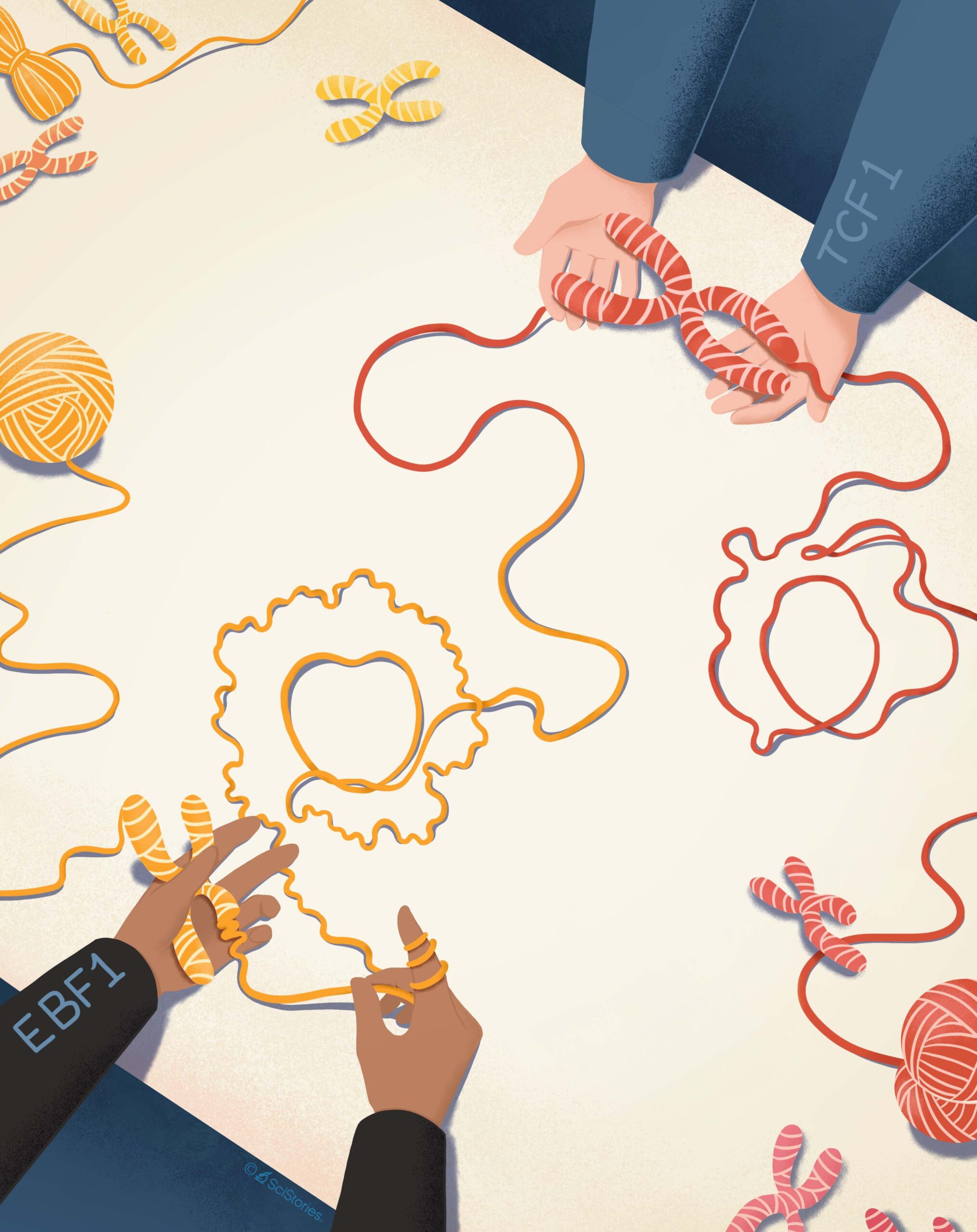PUBLICATIONS

EBF1 nuclear repositioning instructs chromatin refolding to promote therapy resistance in T leukemic cells
Molecular Cell
2022
Chromatin misfolding has been implicated in cancer pathogenesis, yet its role in therapy resistance remains unclear. Here, we systematically integrated sequencing and imaging data to examine the spatial and linear chromatin structures in targeted therapy sensitive and resistant human T cell acute lymphoblastic leukemia (T-ALL). We found widespread alterations in successive layers of chromatin organization including spatial compartments, contact domain boundaries and enhancer positioning upon the emergence of targeted therapy resistance. Reorganization of genome folding structures closely coincides with restructuring of chromatin activity and redistribution of architectural proteins. Mechanistically, derepression and repositioning of the B-lineage-determining transcription factor EBF1 from the heterochromatic nuclear envelope to the euchromatic interior instructs widespread genome refolding, and promotes therapy resistance in leukemic T cells. Together, our findings suggest that lineage-determining transcription factors can instruct changes in genome topology as a driving force for epigenetic adaptations in targeted therapy resistance.